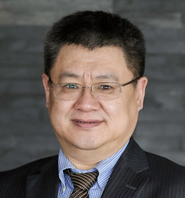5G is already creating a healthier environment for hospitals in China, but standardization could write an even stronger prescription for innovations in healthcare, according to Lu Qingjun.

Lu, director of Development Office in China-Japan Friendship Hospital and National Telemedicine and Connected Healthcare Center of China, recently offered his perspective on 5G practice cases in the healthcare vertical during Mobile World Congress Shanghai 2021. While he said 5G applications are becoming part of intelligent healthcare services, uniform standards are needed to better guide their development.
Development is already under way, with close to 500 hospitals had been equipped with 5G base stations already up and running, Lu noted. Even in these early stages, the technology is helping improve healthcare.
“5G enables fast and efficient communication between equipment, systems and doctors,” Lu said. “Mobile communications featuring high throughput and low latency enabled by 5G increase mobility for healthcare. This allows many devices to be mobile.”
Mobile devices, in turn, put valuable information literally in the hands of doctors as they make their patient rounds. “But in the near future, the technology also has benefits beyond the hospital doors. In particular, with tele-health and the Internet, 5G devices can be integrated with AI terminals,” he said. “This helps patients to communicate with doctors and get medical care anytime and anywhere.”
But a major stumbling block is the lack of 5G standards for healthcare applications, leading to uneven development and products that can’t interoperate.
“In fact, the biggest challenge of applying 5G smart healthcare is addressing uneven development of different technologies in the industry,” Lu said. “We know that 5G smart healthcare applications need an industry ecosystem. That’s why we urged over 100 hospitals and dozens of companies in China to join us in standards research for the 5G healthcare industry.”
The industry listened, and in September 2019, under the direction of China’s National Health Commission, more than 30 hospitals joined forces with the China Association of Medical Equipment, providers China Telecom, China Mobile, China Unicom, and equipment supplier Huawei to establish China’s first 5G Hospital Network Standard.
Lu said the goal in developing 5G healthcare applications standards is to harness the capabilities the technology offers and determine how that can be applied in a medical setting.
“For example, how do we combine 5G communications with AI and doctors’ practices, and how can we make doctors work more efficiently? This requires us to build models and test them, and produce parameters. These parameters will then be promoted to partners so that we can deploy 5G infrastructure together.”
Indeed, collaboration is key to this process, requiring participation across many industries and organizations – so a central body to coordinate this process makes sense, Lu stressed.
“We need an industry entity to set up a platform to share processes, standards and protocols. This allows us to enjoy the convenience and value brought by 5G smart healthcare in a harmonized ecosystem,” he said. “Of course, we believe that an industry entity can help to shorten the time needed and accelerate the progress significantly. Meanwhile, with this organization in place, we will attract more participants to build the ecosystem.”
At the Mobile World Congress, representatives across multiple wireless organizations and standards bodies met to discuss various issues including 5G development. Lu said such events help accelerate 5G technology’s evolution.
“While digital technologies are being embedded in industries, we need collaboration across industries, organizations and government departments,” he said, adding that “platforms that gather experts in related industries from around the world to discuss 5G’s current status and future trends belong to the entire industry instead of one company or organization.”
To spur on this industry collaboration, Lu is spearheading a study to determine what technical parameters are required to develop 5G applications that meet healthcare quality control requirements.
“By letting standards lead the way, hospitals can work under unified standards, technical quality and parameters. This will help ‘Internet + digital healthcare’ to be applied nationwide. And it requires all parties to work together to develop the ecosystem.”
As for potential future 5G healthcare applications that will arise from this process, Lu thinks it will focus not only on imaging but also patient monitoring.
“We can start from selecting some 5G cases such as AI applications, medical devices, and wearables,” Lu said. “With experiments by various institutions, results can be pooled together to form national standards for 5G healthcare.”
These standards, in turn, can help establish not only the applications themselves but perhaps just as importantly, how they should be monitored and regulated.
“In this way, we not only set up technical parameters for applications but also establish business processes and regulations,” Lu added. “It becomes very helpful for us to quickly advance digital healthcare technologies and models.”








